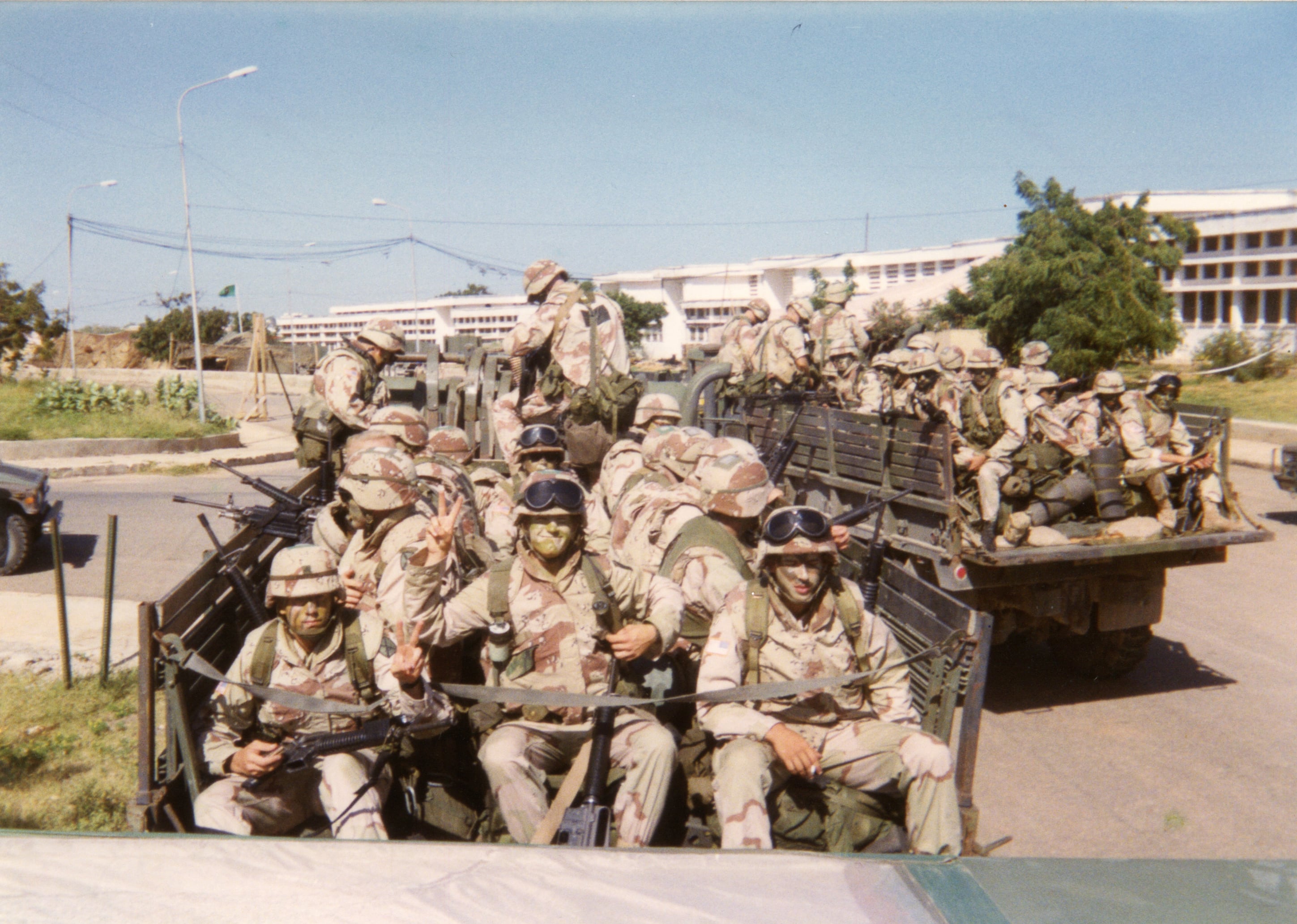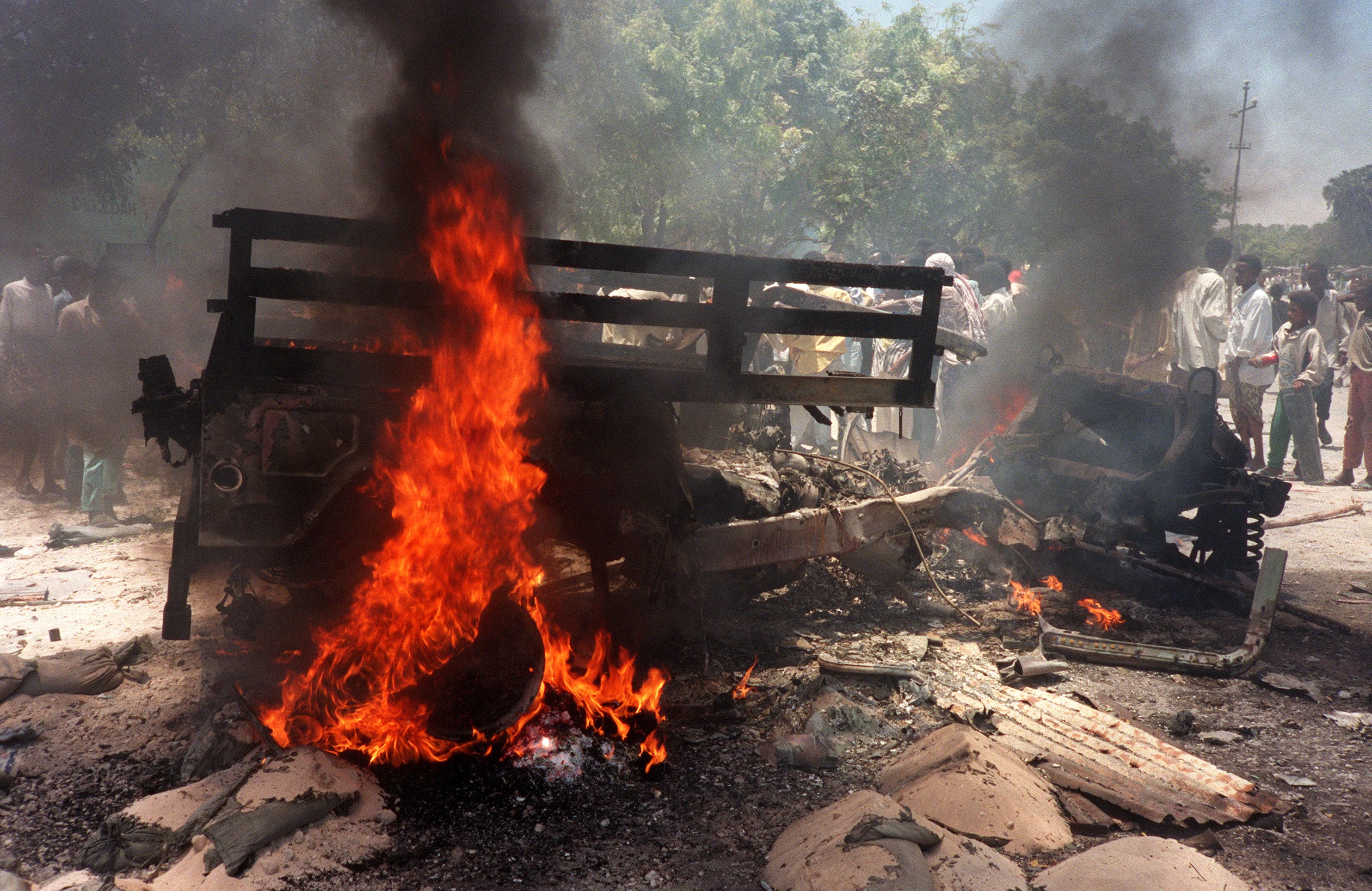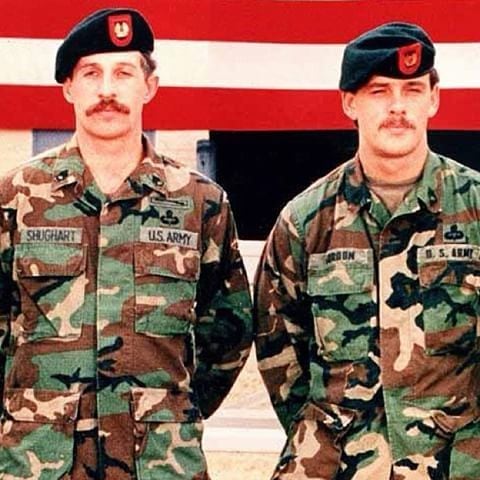The Academy Award-winning film “Black Hawk Down” is one of the most enduring military movies made in the past few decades. Much of the movie’s dialogue has achieved a sort of memetic syndication among troops — especially lines attributed to the Delta Force operator who went by “Hoot.”
The movie, which is based on journalist Mark Bowden’s 1999 book “Black Hawk Down: A Story of Modern War,” chronicles the costliest and longest sustained firefight the U.S. military had fought since the Vietnam War, according to the Army. Among the dead were 18 slain soldiers, including two Delta Force operatives who were posthumously awarded the Medal of Honor.
But digging beyond the script offers further insight into the characters and events surrounding the failed 1993 Mogadishu raid intended to capture Somali warlord Mohamed Farrah Aidid.
Early signs of trouble
Two Black Hawk helicopters were shot down during the Oct. 3, 1993, raid depicted in the film, killing some on board, as well as some who came to their aid, and dealing a blow to the American psyche when the image of a dead U.S. soldier dragged through the streets went public.
But prior to the events chronicled on film, Americans had already sustained losses in Somalia.
On Sept. 25, 1993, a lesser-known incident cost the lives of three other U.S. aircrew when their own Black Hawk was struck by a rocket-propelled grenade.

It was the first time a helicopter had been downed in Mogadishu, though not the first time one had been hit by hostile fire, according to contemporaneous news reports.
In a miniature version of the events that would play out roughly one week later, three more U.S. troops and three Pakistani soldiers were wounded as they worked to secure the crash site, news reports stated.
About a month prior to the shootdown, on Aug. 8, 1993, four U.S. soldiers were also killed when their vehicle struck a land mine remotely detonated by members of Aidid’s militia.
The warlord’s top lieutenant
Osman Ali Atto, a financier for Aidid, is depicted early in the film being spirited away by U.S. special operators who surgically disable the engine of his vehicle, which was traveling in a three-car convoy.
The reality, according to an interview Atto gave to the British Broadcasting Corporation, is that there was only one vehicle and he was in it.
“And when the helicopter attacked, people were hurt, people were killed,” Atto told the BBC from his Mogadishu residence in 2002. “The car we were travelling in, [and] I have got proof, it was hit at least 50 times. And my colleague Ahmed Ali was injured on both legs.”
Navy SEAL Howard Wasdin, who helped capture Atto, recalled in his book how the mission took place in an urban area, with militia appearing in the neighborhood to shoot up at the helicopters.
Atto, like other Somalis, said the film painted the country’s inhabitants in an unfair light.
How Somalis were depicted
Yusuf Hassan of the BBC’s Somali service said at the time of the movie’s release that many Somalis felt the film depicted them as fanatical caricatures rather than fully formed characters.
"They were not telling their story,” Hassan said in 2002. “At that time, I was covering the conflict as a journalist, and I know that the people who were fighting were not only supporters of Aidid. ... Many of them were just people in the neighborhood who got caught up in this fire and were trying to defend their homes, as they thought they were under attack.”
The exact number of Somali deaths, both civilian and militant, is unknown. Estimates range widely from several hundred to a thousand.
Months before the October 1993 raid, another U.S. attack had dealt a propaganda blow to the mission and potentially turned local Somalis against the Americans, according to observers who were there.

On July 12, 1993, dubbed “Bloody Monday," U.S. forces seeking to kill Aidid were tipped off that he would be present at a meeting with various clan leaders in Mogadishu. In reality, the event was also attended by moderate clan leaders, “who were apparently meeting to discuss mediation between [the U.N.] and [Aidid],” reads a 1995 Human Rights Watch report.
Late in the morning, Cobra attack helicopters arrived and launched 16 anti-tank missiles and 20mm cannon fire into the house, killing more than 50 people. Bowden called Bloody Monday “a monumental misjudgment, to say the least.”
Others, like journalist Scott Peterson, called the event a war crime. Human Rights Watch said the attack “breached the rule of proportionality in humanitarian law even if it was conducted in good faith.”
More than Rangers and Delta
Two soldiers, Pfc. James Martin and Sgt. Cornell Houston, who died during the raid were from the 10th Mountain Division. They were part of 2nd Battalion, 14th Infantry Regiment, which had been tapped to rescue pinned-down members of Task Force Ranger. Martin was killed while providing cover for medics and Houston died fighting from the rescue convoy.
Pararescueman Tech. Sgt. Tim Wilkinson earned the Air Force Cross after fast-roping to a downed UH-60 helicopter to extract five wounded Rangers. Master Sgt. Scott Fales, who joined him, earned the Silver Star after he sustained a leg wound but continued to help treat those who Wilkinson brought to him.
Combat controller Tech. Sgt. Jeffrey Bray, who also received the Silver Star, was credited with using infrared strobe lights during the night to string together an “ingenious perimeter marking system" to call in “surgical fire support,” his citation reads. “On several occasions he expertly [called in] air support less than 15 meters from his position" near Mogadishu’s Olympic Hotel.

Five Navy SEALs were also present during the raid, each earning a Silver Star. Several of the SEALs were part of the initial assault force, according to award citations at the time, and helped fight in and out of the crash sites.
Wasdin, the SEAL who helped capture Atto, was wounded three times during the battle.
Other U.N. members were also present and helped Americans out of the melee following the botched raid. Malaysian coalition partners suffered two dead and seven wounded, and the Pakistanis suffered two wounded, as well, according to a U.S. Army history of the battle.
The disaster triggered a SECDEF resignation
Not depicted on film is the political fallout that occurred after the battle.
In the wake of congressional scrutiny, then-Secretary of Defense Les Aspin was forced to resign. He accepted blame for his role in denying requests by commanders in Somalia to send tanks and armored vehicles prior to the failed raid.
A Senate report also later faulted then-Chairman of the Joint Chiefs Gen. Colin Powell and his staff for rejecting a request to send AC-130 gunships.
The images of Americans killed and aircraft downed prompted President Bill Clinton to withdraw combat troops from Somalia. The disaster may have also influenced Clinton’s decision not to intervene in the Rwandan genocide in 1994.
Aidid, the Somali warlord for whom U.S. troops had come in early October 1993, ultimately died of a heart attack after suffering a gunshot wound in 1996.
Roughly 800 U.S. troops have since returned to Somalia, coupled with airstrikes in the country, over the past few years. The Americans buttress an African Union mission in the country to train and equip Somali government forces and combat the extremist group al-Shabab.
Kyle Rempfer was an editor and reporter who has covered combat operations, criminal cases, foreign military assistance and training accidents. Before entering journalism, Kyle served in U.S. Air Force Special Tactics and deployed in 2014 to Paktika Province, Afghanistan, and Baghdad, Iraq.





